Binocular Vision
Today, we see with two eyes. The University of Houston's College of Engineering presents this series about the machines that make our civilization run, and the people whose ingenuity created them.

We humans are largely binocular beings. Each eye alone gives us roughly a 130-degree field of vision. With two eyes, we can see nearly 180 degrees. Most of that field is what's called a Cyclopean image -- the single mental picture that a Cyclops might see. But that single image, created by two eyes, has both range and depth. Only an occasional person, despite having two eyes, remains monocular. Their eyes fail to form that Cyclopean image.
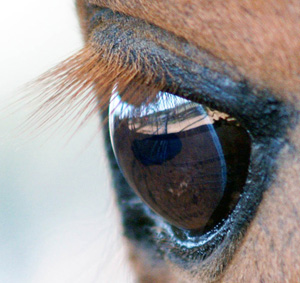 You and I are predator animals. Like other predators, our eyes face forward. They're designed less to look out for our own protection than to locate prey.
You and I are predator animals. Like other predators, our eyes face forward. They're designed less to look out for our own protection than to locate prey.
Horses, cattle, and sheep, on the other hand, are the predator's prey. They have to be aware of danger from any direction. The eyes on either side of a horse's head, for example function in monocular mode. A horse can see all the way around, except for the portion in back that's blocked by its own body. And it has binocular vision over a very small range directly in front. By the way, a horse's vision is roughly 20/30 compared to 20/20 for a human. And it has a limited ability to distinguish colors.
The eyes of the predator cat have even poorer resolution, far less ability to distinguish color, and a very limited field of view. Cats have to turn their heads to see all around them. But, they have much wider binocular vision, excellent night vision, and they quickly accommodate to lighting changes. Cats have another predator advantage: Unlike humans, they don't have to blink to keep their eyes lubricated with water.
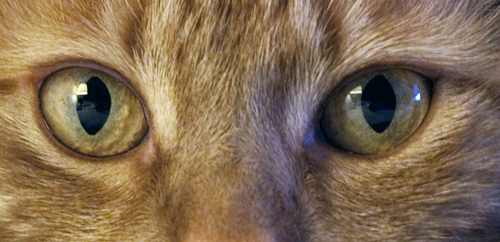
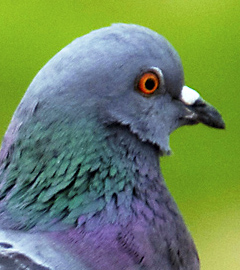 The prey/predator difference is dramatic in birds. A birder once told me, "There are really only two kinds of birds: raptors and bird feed." A pigeon's field of vision is even greater than a horse's -- nearly 360 degrees, with a very narrow binocular portion in front. And it processes what it sees faster than we can. Like horses, pigeons are very sensitive to any movement.
The prey/predator difference is dramatic in birds. A birder once told me, "There are really only two kinds of birds: raptors and bird feed." A pigeon's field of vision is even greater than a horse's -- nearly 360 degrees, with a very narrow binocular portion in front. And it processes what it sees faster than we can. Like horses, pigeons are very sensitive to any movement.
A predatory owl has only a 120 degree field of vision, and most of that's binocular. Like us, any such raptor has to turn its head this way and that, but they can spot prey at great distances. The accuracy of their binocular vision is astonishing by human standards. We use the expression "hawkeye" for good reason.
Unlike humans, few birds can move their eyes. But they're very well-equipped to distinguish color. The eyes of sea birds function like camera filters, cutting through haze and fog. A penguin's eyes are adapted to blue aquatic surroundings. Most birds can see well into the ultraviolet range, which we cannot see at all.
So animals display either the binocular focus of predators like us, or the wide visual spread of prey animals. And that's only the beginning. Once we know the clues, the eyes -- how they're placed and how they act -- have so much more to tell us about who and what any beast really is.
I'm John Lienhard at the University of Houston, where we're interested in the way inventive minds work.
See the Wikipedia articles on binocular vision and bird vision. All photos by J. Lienhard.
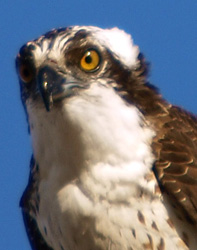
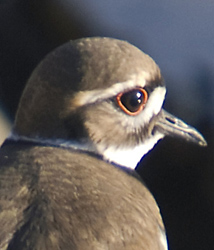
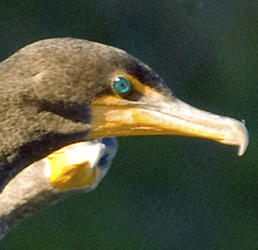
Left to right: Osprey, Killdeer, Cormorant -- preditor, prey, preditor. The Osprey's eyes look forward. The Killdeer's are on the side of the head. The Cormorant's are on the side, but oriented so as to see forward.